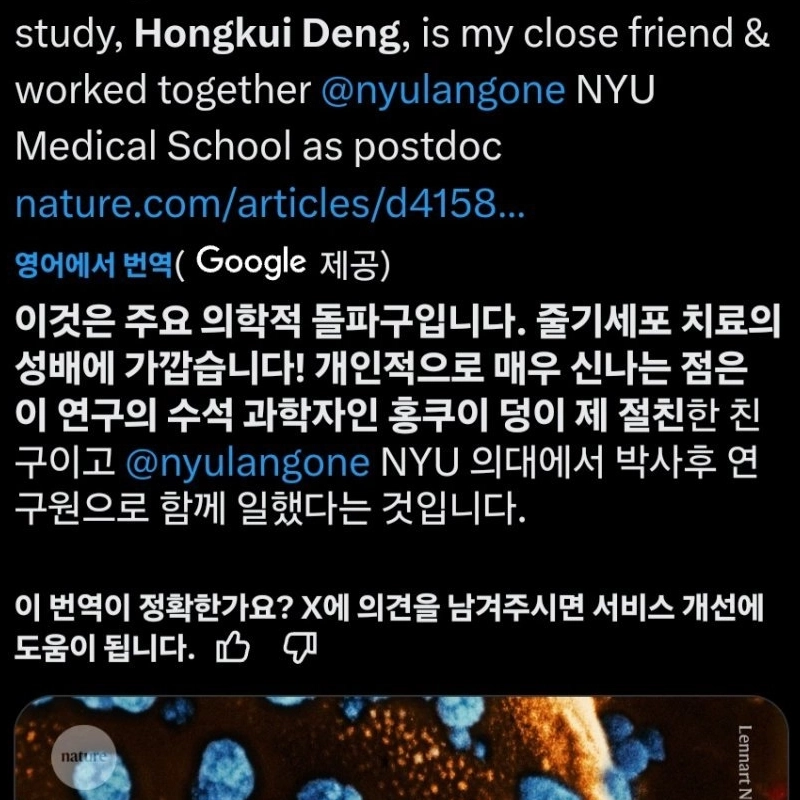(1)Jiseomalchisi, 4 + Gupri]; cd A 25-year-old woman with type 1 diabetes began producing her own insulin less than three months after receiving a reprogrammed stem cell transplant. She is the first type 1 diabetic to receive treatment using cells extracted from her own body. “Now I can eat sugar,” the woman from Tianjin, China, told Nature. More than a year after receiving the transplant, she said, “Now I can enjoy all kinds of food — I especially like hot pot.” She requested anonymity to protect her privacy. James Shapiro, a transplant surgeon and researcher at the University of Alberta in Edmonton, Canada, expressed surprise at the results of this surgery. “This patient previously required significant amounts of insulin, but his diabetes has now completely resolved.” The study, published today in Cell, is an extension of the results of another research team in Shanghai that successfully transplanted insulin-producing islet cells into the liver of a 59-year-old man with type 2 diabetes in April. These islet cells were also derived from reprogrammed stem cells extracted from the man’s body, after which he no longer took insulin. These studies are part of a handful of pioneering stem cell clinical trials to treat diabetes, which affects about 500 million people worldwide. Most people suffer from type 2 diabetes, which occurs when the immune system does not produce enough insulin or does not utilize insulin properly. Type 1 diabetes occurs when the immune system attacks the islet cells of the pancreas. https://www.nature.com/articles/d41586-024-03129-3 —– The future of humanity is bright…
image text translation
(2)follow
(3) Seo*, bottom 7 core
(4)-^-Gyo-Mac Gubli;Ah Kim~Yes;-Mi| Puck, draw 3`+^haha 4 chew^
(5)Ligyo language-+ +^cheo loop language 8 hami;| Eh { -+~< pay back/goal
(6)+^~, Ha Myeong-deok! Yorup 3+ Eol`Seokongyo+ Myeongra, Coner, Locker ~, Duck
(7)+^, reach;- +Sila+ + | 3 Yes dobab;seo,+;do+ |I+^
(8)Do (nardideok bear
(13)This is a major medical breakthrough. stem cell therapy
(14)It’s close to the Holy Grail! Personally, what’s very exciting is that
(15)Honggui Deng, the lead scientist of this study, is a close friend of mine.
(16)Guigo ,!Nara 78 Atakgeut Postdoctoral research at Hipyosin Medical School
(17)It means that we worked together for salvation.
(18)Is this station correct? Please leave a comment on * to improve our service.
(19)Help is appreciated. 5
(20)9
(21)`3 daughters
(22)’
(23)[
(24)Even if it is -+~<
(25)3 bur*|uh
(26)Source: Mara+I, Seo
